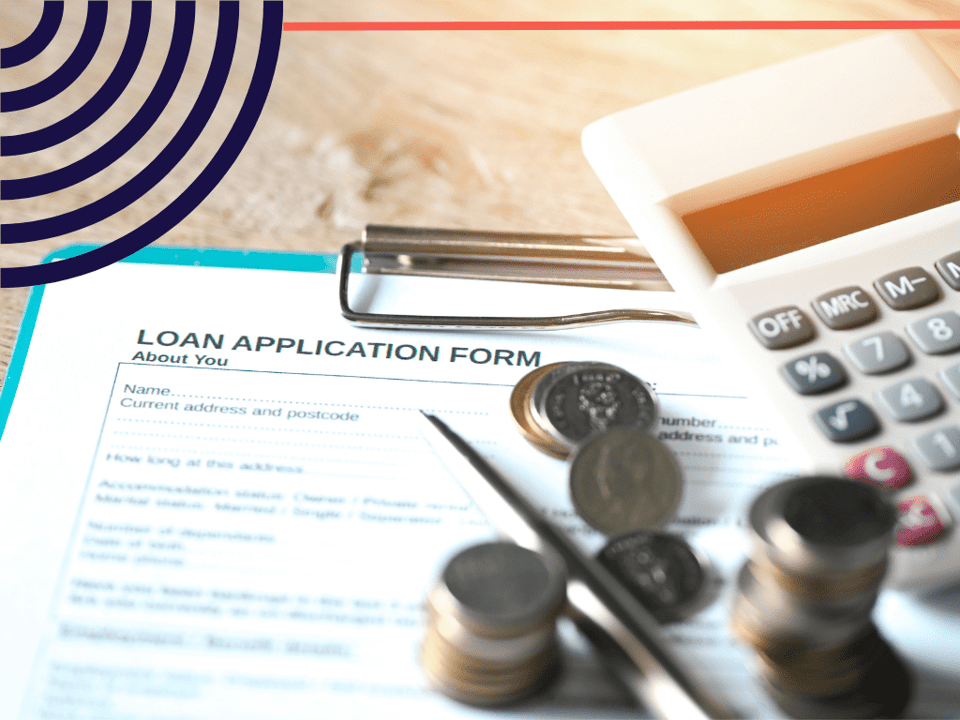When it comes to financing everyday expenses or paying off debt, two popular options are credit cards and personal loans. However, each product has unique features that can make it more beneficial depending on your specific financial goals. In this comprehensive guide, we will break down the differences between care credit and personal loans, helping you make an informed decision about which option is best for you.
Key takeaways:
CareCredit is a credit card designed specifically for health and wellness needs, which can be used for medical expenses not typically covered by insurance, including elective procedures, copayments, deductibles, and even veterinary care. It often offers promotional financing, such as zero interest if paid in full within a specified period, but can have high interest rates after that period. A personal loan, on the other hand, is a more general type of borrowing that can be used for any purpose, including medical expenses, and usually has a fixed interest rate and repayment period.

Credit cards, like financial products such as CareCredit, are a form of revolving credit, allowing borrowers to repeatedly borrow money within a set limit. On the other hand, personal loans are installment credit, providing you with a one-time payment of cash that you repay over a fixed term. While the credit requirements for both options are generally the same, lenders offer different options based on credit scores ranging from bad to excellent. These can be particularly useful in managing medical debt.
Now, let's delve deeper into the specifics of credit cards, care credit, and personal loans as financing options to help you, the borrowers, determine which option suits your needs with various lenders.
The CareCredit Card, designed primarily for healthcare expenses, offers unique financing options compared to regular credit cards. Its loan terms vary based on promotional offers, ranging from short-term (6 to 24 months) to long-term (24 to 60 months) interest-free periods if paid in full within the promotional period. However, if the balance isn't cleared by the end of the promotional term, interest is charged from the original purchase date. The card's interest rates are often higher than traditional credit cards, so timely payments are essential. Applying for CareCredit can result in a hard inquiry on your credit report, which might temporarily reduce your credit score. Yet, responsible usage and timely repayments can potentially boost your credit history over time. Before applying, it's crucial to understand all terms and assess if this card aligns with your financial needs.
Credit cards like CareCredit offer convenience and flexibility, allowing you to make purchases such as medical loans and pay them off over time. With a credit limit set by lenders, you can continuously use the card as long as you repay your bill. Credit cards come with varying interest rates, and the current average APR is around 16.28% according to Bank rate. The monthly payments for credit cards fluctuate depending on how much you spend in a billing cycle.
One advantage of credit cards, like care credit, is their potential to help borrowers build credit. By using your card responsibly and making timely payments, you can improve your bank rate credit score over time. Additionally, cards often come with rewards programs that allow you to earn cash back, points, or travel miles on your purchases. However, it's important to note that credit cards can have higher interest rates compared to other lenders such as personal loans.

Personal loans, a form of credit line often utilized by credit borrowers, provide you with a lump sum of money that you repay over a predetermined term. These loans are suitable for financing large expenses such as home renovations, consolidating revolving credit debt, or making major purchases. According to Bank rate, the average interest rate for a 24-month personal loan is currently around 9.65%.
One of the main advantages of personal loans, like those offered by CareCredit and Bank rate, is the ability borrowers have to spread out their payments over time with a predictable monthly payment. This can help you manage your money effectively and plan for the future. Personal loans also have the potential to help you build credit if you make your payments on time. However, it's worth noting that personal loans don't offer rewards like credit cards.
Now that you grasp the fundamentals of credit cards like care credit and personal loans via bank rate, let's delve into when it's best to use each option for your payments, keeping in mind the impact on your score.
If you need access to revolving funds and prefer the flexibility of making purchases and paying them off over time, a credit card like care credit is a better option for you. With a credit card, you'll receive a credit limit that you can continuously use as long as you repay your loan payments. Credit cards are especially beneficial if you want to earn rewards on your everyday purchases. Bank rate can be an excellent resource for comparing these options. Medical loans are another alternative to consider for specific expenses.
However, if you're looking to finance large purchases or manage care credit payments over an extended period, a personal loan from bank rate is generally a better choice. While credit cards may offer introductory 0% APR periods, these are limited to a short timeframe, typically six to 20 months. Personal loans provide a longer repayment period, which can be up to 60 months or more, depending on the loan terms, allowing you to handle your balance more efficiently.

If you have a specific financial goal in mind, such as financing a major home renovation, consolidating high-interest debt, or looking to sell auto notes, a personal loan or medical loans could be an ideal solution. Even with bad credit, your credit score can influence your loan terms according to bank rate. Selling auto notes can generate a lump sum of cash, which could then be used to pay off a personal loan, reduce other debts or cover medical loans.
Personal loans, like those offered by bank rate, provide a fixed interest rate and a predictable monthly payment, making it easier to budget and plan for the future. These loans are particularly beneficial for larger expenses that require a long repayment term, even if you have bad credit. If your goal is to manage a large expense like a renovation, or to free up capital by selling auto notes through united credit, a personal loan can provide the necessary funds upfront. However, remember that your credit score can influence the terms of your loan.
When it comes to debt consolidation, both credit cards and personal loans can be viable options. However, it's important to do some calculations to determine which option will save you more money. Additionally, if you choose to sell auto notes, you should consider how the proceeds could be used to reduce your overall debt. Consider factors such as interest rates, fees, and the total cost of each option before making a decision.
To illustrate the potential cost differences between credit cards like care credit and personal health line loans, let's consider a hypothetical example. Suppose you want to make a $5,000 balance purchase and repay it over 24 months.
If you used a credit card like care credit with the average 16.28% APR, you would end up paying approximately $891 in interest. On the other hand, if you took out a personal loan with the average 9.65% interest rate, you would only pay around $518 in interest. In this scenario, it would be more cost-effective to choose a personal loan over care credit.
However, it's important to note that if you qualified for a care credit card or a medical loan with a 0% APR for the first 20 months, followed by a 16.28% APR, you would only pay around $27 in interest. In this case, qualifying for personal lines of credit with favorable perks would be the cheaper option. Always consider your specific circumstances and compare the costs before making a decision.

While credit cards, personal loans, and alternatives like CareCredit are popular financing options, it's important to consider your needs when deciding how to pay.
Consider these alternatives such as pay options, credit score improvements, personal lines of credit, and medical loans if they align with your specific financial goals and circumstances.
When it comes to financing, there are several options available, including choosing between a personal loan and a car loan. Deciding between a personal loan vs car loan is a significant decision and should be made after carefully considering your financial situation and understanding the terms of each.
The choice between a personal loan and a car loan, or even using a care credit card, primarily depends on what you are intending to finance. If you're specifically looking to purchase a car, a car loan or paying with your care credit card may offer lower interest rates as the loan is secured against the vehicle. However, a personal loan can be used for a broader range of purposes, including consolidating debts or financing a large purchase other than a car.
Both types of loans, whether it's a personal loan, car loan, or even a care credit card, have their own merits and demerits. The right choice depends on your unique needs and circumstances. Always ensure to thoroughly evaluate interest rates, repayment periods, and other terms before making a decision. Whether you opt for a personal loan, a car loan, or use your care credit card, remember that timely repayment is vital for maintaining a healthy credit score and overall financial stability.
A personal line of credit can be an effective way to manage health care costs, especially if you qualify for a promotional period of low or no interest. This works much like a regular credit card, allowing you to borrow as much money as you need up to your credit limit and make payments over time. However, it's important to understand that once the promotional period ends, you'll likely be subject to a variable interest rate, which means your interest charges could increase.
If you have excellent credit, you may qualify for financing options with lower fees and interest rates. Online lenders like LendingPoint, Upstart, and LightStream offer personal loans that can be used for medical financing. These installment loans provide term financing, allowing you to repay your medical bills over a set period.
Health care providers often work with financial institutions to offer financing options to their patients. This can be a good option if you have a high balance on your medical bill and need more time to make payments. However, make sure to review the terms of these offers carefully. Some may come with variable interest rates, which could increase your costs over time.
Another option for managing medical costs is a balance transfer credit card. This allows you to move your balance from a high-interest card to one with a lower interest rate, often for a fee. Some cards even offer promotional periods with 0% interest on new purchases and balance transfers. This can be a good option if you have a good credit history and can pay off the balance before the promo period ends.
Consumers with a strong credit history may also consider medical credit cards like CareCredit. These cards often offer promotional periods with no interest charges if the balance is paid in full within the promotional period. However, if you don't pay off the balance in full by the end of the promo period, you could be hit with high interest charges.
Lastly, don't overlook the importance of health insurance in managing medical costs. While it may not cover everything, it can significantly reduce.
Bank rate, a leading personal finance company, offers a variety of financial products, including installment loans and revolving credit lines. An installment loan is a type of credit that allows you to borrow a fixed amount of money and repay it over time in equal payments. This can be particularly beneficial for large expenses such as medical bills. On the other hand, a revolving credit line, like a credit card, gives you access to a set amount of money that you can borrow as needed. You make payments over time based on how much you've borrowed.
Here are a few things to consider when choosing between an installment loan and a revolving credit line:
Bank rate also offers a variety of editorial content to help cardholders make informed financial decisions. This includes articles, blog posts, and guides on topics ranging from how to improve your credit score to ways to save money on everyday expenses.
Finally, it's worth noting that the Bank rate logo is a trusted symbol in the financial industry. When you see this logo, you can be confident that you're getting reliable, unbiased financial advice.
In addition to financial products, Bank rate also provides resources for finding a doctor.


